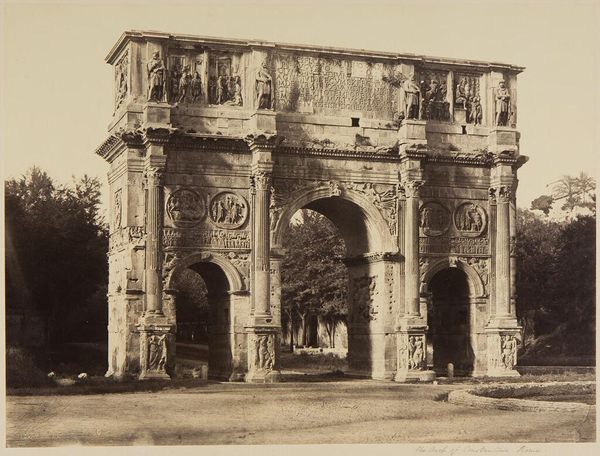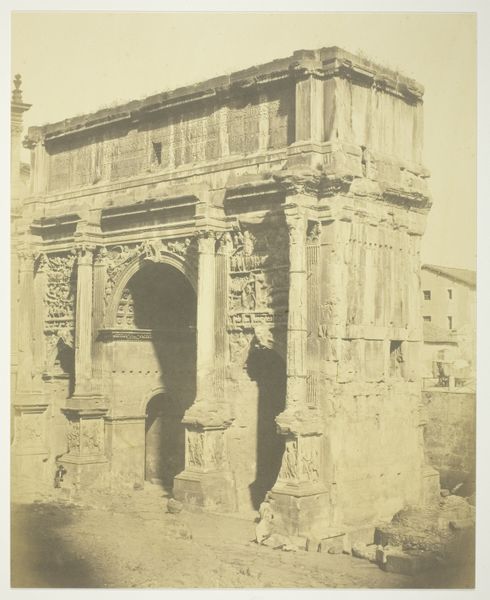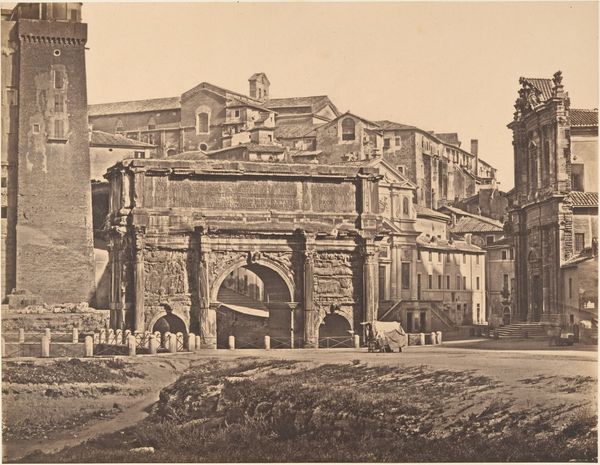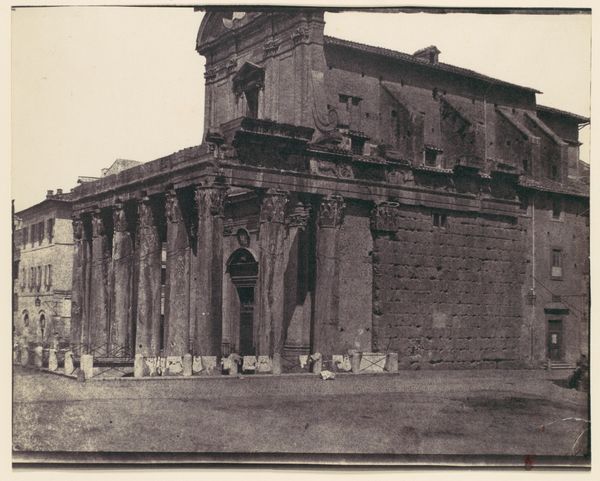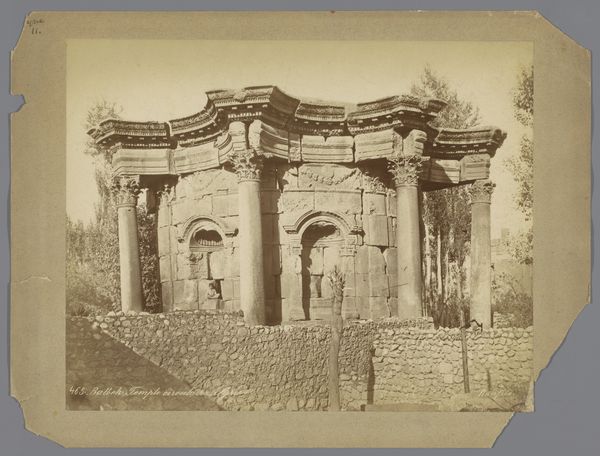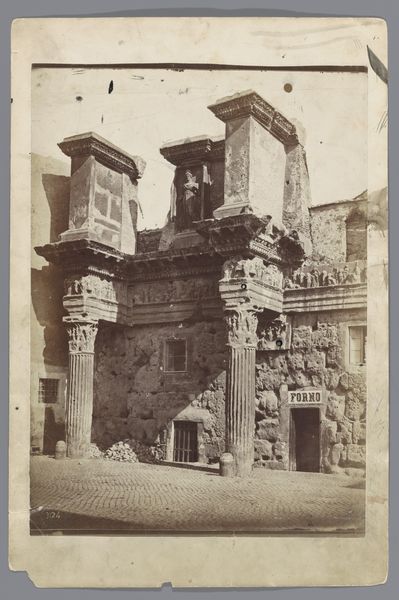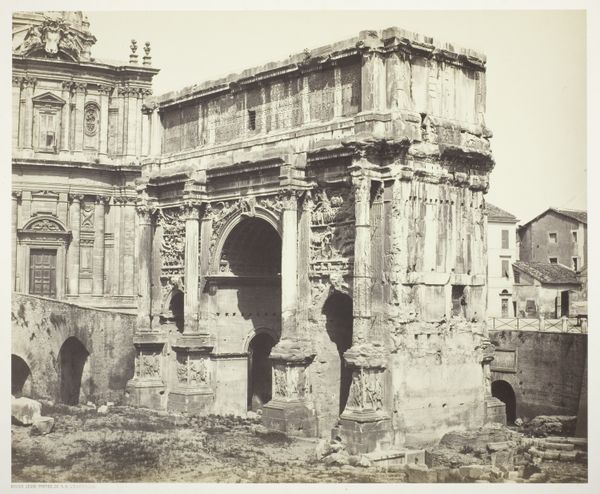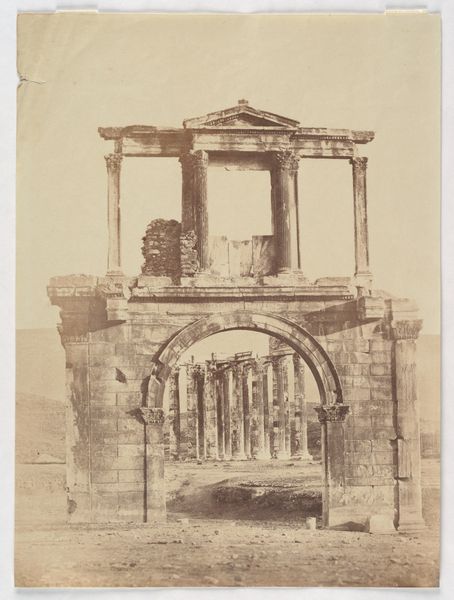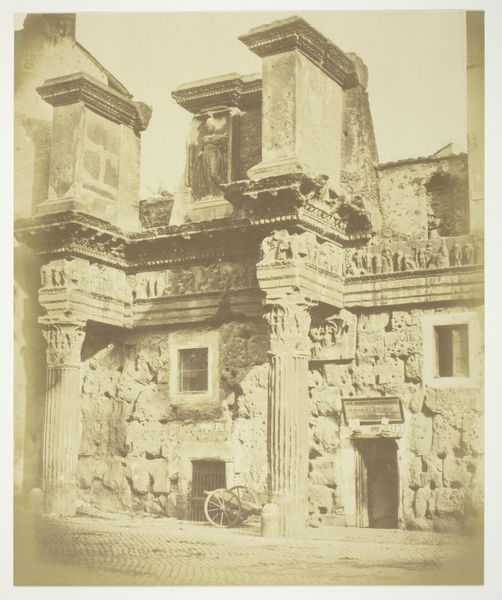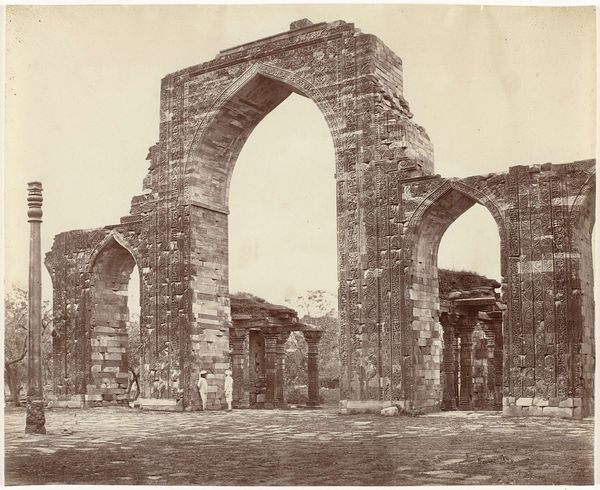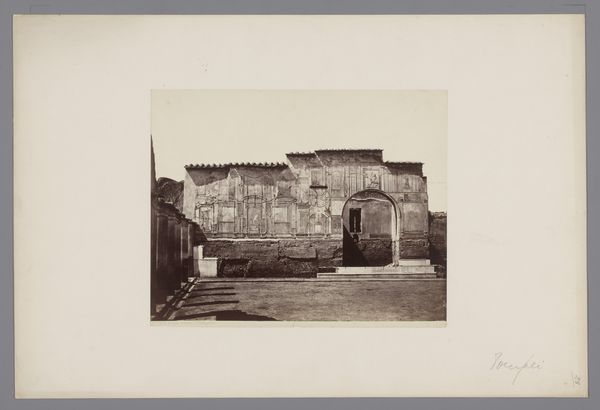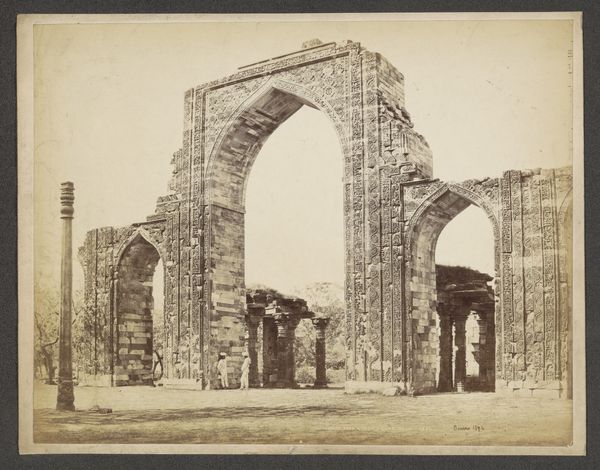
photography
#
greek-and-roman-art
#
landscape
#
photography
#
ancient-mediterranean
#
cityscape
Copyright: Public domain
This photogravure of the Arch of Septimius Severus was made in Rome in the late 1800s by Roberto Rive. Focusing on the material reality of photography, we can see how it gives a powerful impression of the monumental architecture. The process involves a copper plate being coated with a light-sensitive gelatin tissue, exposed to a photographic negative, and then etched. The resulting print captures incredible detail, offering a sense of the object’s weight and weathering over centuries. We can appreciate how stone and architecture testify to the labor and resources that went into its construction. The arch itself, like the photograph, served a political purpose: to commemorate military victories and project imperial power. By examining the material and the making, we gain insight into how both the arch and its image reflect the social and political contexts that gave rise to them. In considering the photograph and the arch together, we can think about how acts of making are used to create collective memory.
Comments
No comments
Be the first to comment and join the conversation on the ultimate creative platform.
